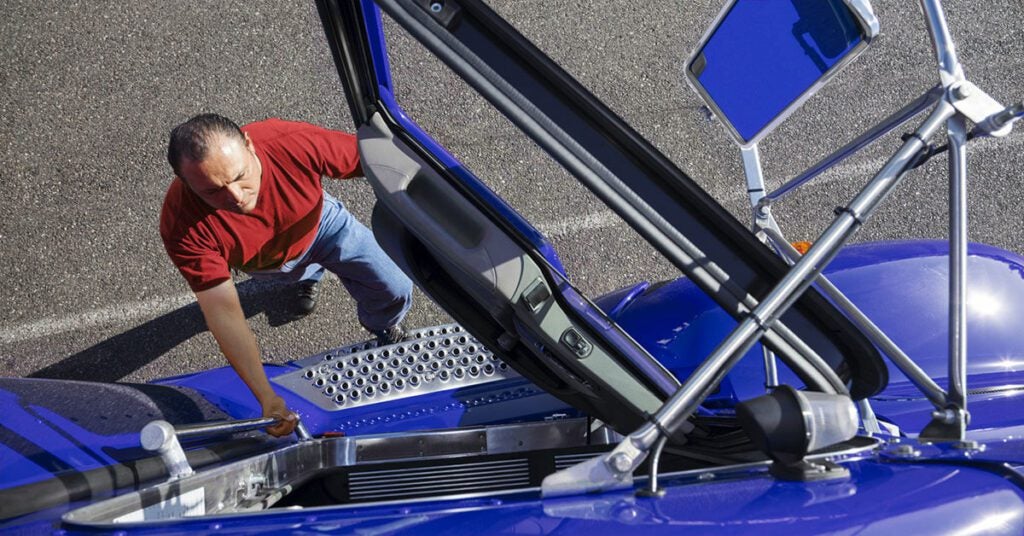This month marks the 20th anniversary of perhaps the most definitive study of what truck drivers like and dislike about their job.
“Job Satisfaction of U.S. Commercial Drivers,” conducted in 1992 and published in May 1993 by the Upper Great Plains Transportation Institute (UGPTI) is based on a survey of nearly 4,000 drivers at U.S. truckload carriers.
The study is as relevant now as it was the day it was published.
“People ask if it’s been updated and part of me says it doesn’t really need to be,” says Brenda Lantz, one the authors of the study. “Driver pay has gone up a little, but the nature of the job and how drivers feel about it are the same as ever.”
Predictably, the study finds that no one factor causes turnover, and conversely no one thing can make a driver happy. While there’s no magic bullet, Lantz says there are steps carriers can take to help drivers feel better about their job and, by extension, their role at their company.
Love the Work
The study shows that drivers overwhelmingly like the work itself, such as driving the truck, the responsibility of being a driver, and dealing with customers. The big challenge is the work environment, including pay and benefits, handling freight, pavement conditions, variations in state laws, company policies, irregular schedules, and time away from home.
Drivers want to be part of the solution, Lantz says, to help management improve these aspect of the job. “They want input on dispatch procedures, safety, customer service, maintenance, ways to cut costs, and so on,” she says. “It’s a source of dissatisfaction when they don’t have that opportunity.”
Lantz says part of the problem is cultural.
She recalls visiting a trucking company with high driver turnover. “The offices were beautiful, with lots of oak and marble and helpful people,” she says. “We were a half-hour into a facility tour when I asked, ‘Where are your drivers?’ It was odd to be at a trucking company and not see a single driver. I was told, ‘Oh, they’re in a separate facility.’ Literally, we had to walk outside to this older building and down into the basement to see where the drivers hung out.”
Similarly, the company cafeteria had separate areas for drivers and office staff.
“In the middle of lunch, I said, ‘We can talk right now about why your drivers feel like they’re not part of this company.’” To its credit, she says, the carrier made several changes including bringing the drivers’ lounge into the main building and opening up the lunchroom — simple changes that made a big difference in the culture.
Career Advancement
The study highlights another major issue for drivers: career advancement.
According to the report, drivers with eight to 20 years of experience — the ones fleets covet most — begin to value their independence less and their paychecks more. Unfortunately, most drivers reach the top of their earning potential in terms of per-mile pay within five years. Just when a driver is maturing as a professional, his desire for more pay takes him outside the profession.
Rather than throwing money at the problem in the form of sporadic merit increases or service bonuses, Lantz and the other authors of the study suggest a structured career path for drivers based on experience, training, and performance.
The plan has five levels: apprentice, certified, advanced, senior, and master driver. Entry-level drivers would start as apprentices and advance to the next level after logging a certain number of accident-free miles and after demonstrating a command of specific skills. Subsequent promotions would be based on driving performance but, at the “senior” level, drivers would also have the opportunity for training in driving-related areas such as customer-service and safety supervision.
“Drivers want a career path but not if it means having to leave the truck for a place in the office,” Lantz says. She suggests that carriers involve drivers in managing aspects of the business—training, safety, compliance, sales, etc.—while retaining their role as drivers, since driving is the most satisfying aspect of their job.
Driver Pay
Finally, she says, there’s the issue of pay.
“I don’t know if the trucking industry will ever be able to move away from per-mile pay,” Lantz says, “but compensating drivers for all of the hours they actually work would make a huge difference in retention and turnover. Maybe not in terms of loyalty to a company, but certainly in keeping people within the industry. If there’s one thing the study shows, it’s that drivers like to drive. They like the work, and that gives trucking a big advantage over other industries. What’s sad is that today, 20 years later, drivers are still leaving jobs they love because they feel like they’re not getting the pay or respect or career they deserve.”
To order a copy of the study, visit UGPTI.



